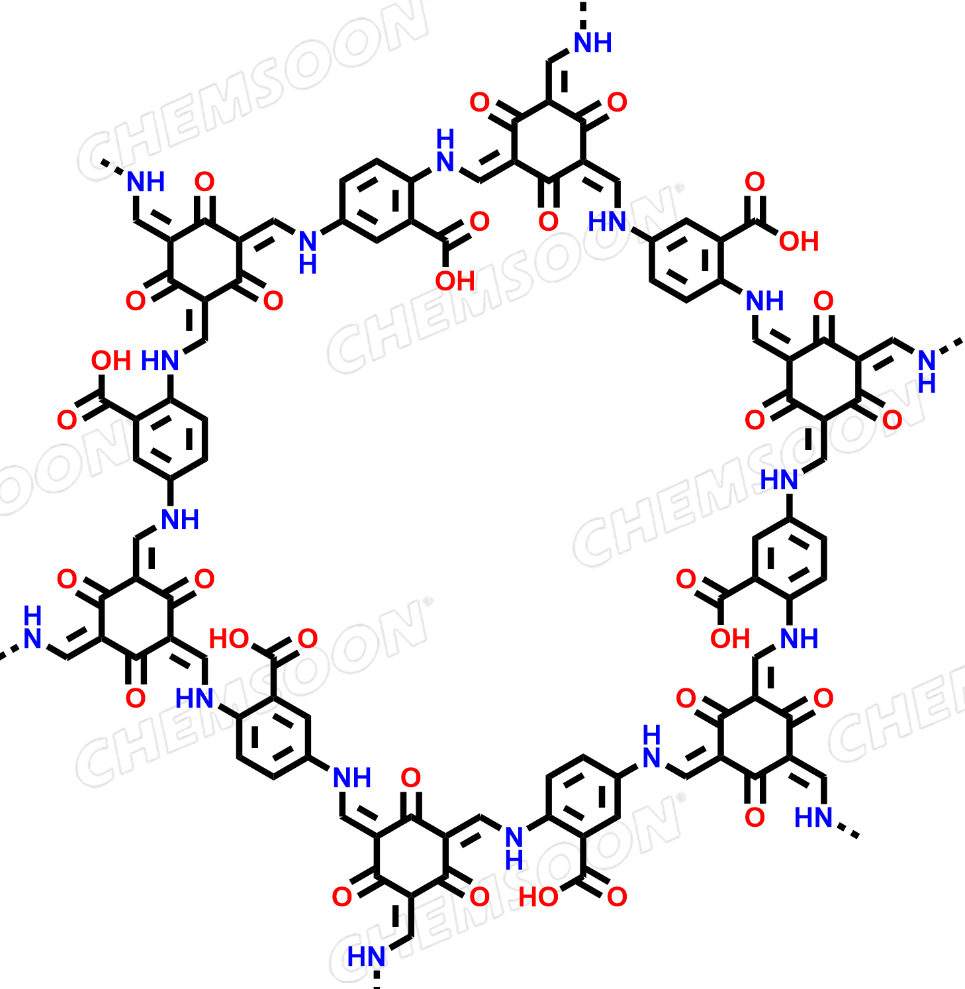
Benzoic acid, 2,5-diamino-, polymer with 2,4,6-trihydroxy-1,3,5-benzenetricarboxaldehyde
Benzoic acid, 2,5-diamino-, polymer with 2,4,6-trihydroxy-1,3,5-benzenetricarboxaldehyde
CAS:2584964-42-9
M.F.:C9H6O6.C7H8N2O2
M.W.:362.29096
Pricing
//
Product:TpPa-COOH
Synonyms:TpDB-HPAN;Benzoic acid, 2,5-diamino-, polymer with 2,4,6-trihydroxy-1,3,5-benzenetricarboxaldehyde
Synonyms:TpDB-HPAN;Benzoic acid, 2,5-diamino-, polymer with 2,4,6-trihydroxy-1,3,5-benzenetricarboxaldehyde
CAS:2584964-42-9
Basic Information
| Unit MF. | C9H6O6.C7H8N2O2 | Unit MW. | 362.29096 | ||
| Linkers |
1) 2,4,6-trihydroxy-1,3,5-benzenetricarbaldehyde (CAS:34374-88-4); 2) 2,5-Diaminobenzoic acid (CAS:610-74-2) |
||||
| Aperture | nm | Pore volume | cm3/g | ||
| Surface Area | BET Specific surface m2/g | ||||
| Analog Structure | |||||
Product Property
| Appearance |
|
|||
| Particle Size | ||||
Stability
1) TpPa COOH only begins to decompose at around 280 ° C, demonstrating good thermal stability. Meanwhile, after soaking in HNO3 solutions of different concentrations for 24 hours, the mass loss was only about 20%, demonstrating good chemical stability.
Preservation
1) Dry and sealed under normal temperature or low temperature conditions;
2) Before use, it is recommended to activate the material in a vacuum oven at 60 ° C for 12 hours to ensure optimal performance.
Other Features
Fluorescence: NA
Applications
1) Accurate separation, especially in the field of ion/molecular separation, such as potassium ion/lithium ion separation.
2) Due to its high crystallinity, controllable pore size, and excellent stability, it may have potential applications in gas adsorption, water treatment, energy storage, and other fields.
Characterizations
References
1) Caili Zhang, Tianliang Xiao, Jianwei He, Bingxin Lu, Xuejiang Li, Jin Zhai,* and Xia Fan*; Small 2023, 19, 2301512; DOI: 10.1002/smll.202301512; Room-Temperature Synthesis of a COFs Membrane Via LBL Self-Assembly Strategy for Energy Harvesting;
2) Zhuo-Hao Wu, Meidi Wang,* Xing-Yu Liu, Jia Wu, Meng-Meng Liu, Yawei Liu, Yu Cao, Xue-Qian Wu, Bo Wang,* and Dong-Sheng Li*; Adv. Funct. Mater. 2024, 2416228; DOI:10.1002/adfm.202416228; Spatial Size Manipulation of 1D/2D Channels in Covalent Organic Framework Membranes Through Dopamine Chemistry for Ion Separations【文献解读】